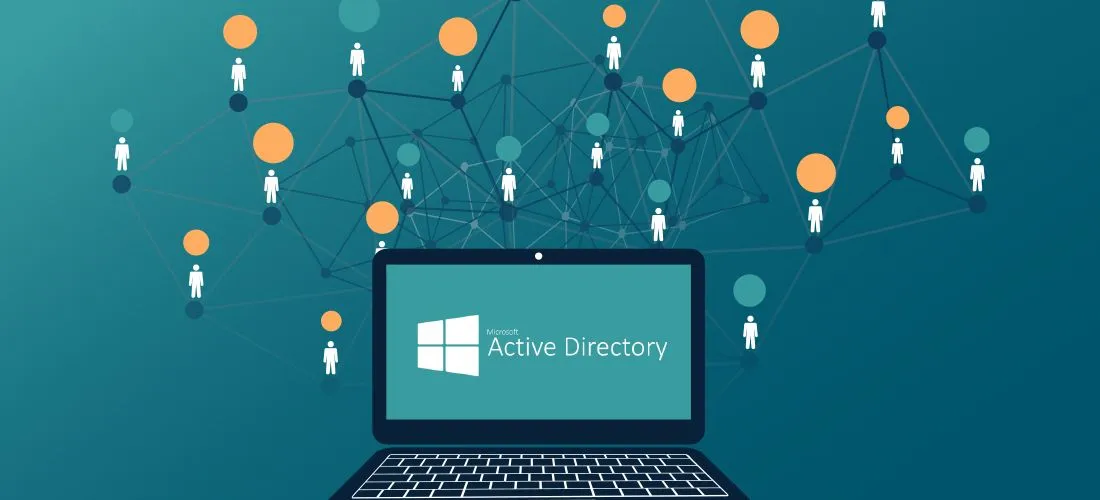Categories
Tags
739 words
4 minutes
Active Directory Terminology
Active Directory Terminology
Object
- Any resource in AD: users, computers, OUs, printers, domain controllers, etc.
Attributes
- Define properties of an object (e.g.,
displayName,givenName). - Used in LDAP queries.
Schema
- The blueprint of AD.
- Defines object classes (like
user,computer) and their attributes. - When an object is created from a class, it’s an instance (e.g.,
RDS01is an instance of thecomputerclass).
Domain
- A logical group of AD objects (users, computers, OUs).
- Can function independently or have trust relationships with others.
- Think of it as a city.
Forest
- A collection of domains.
- Topmost container in AD.
- Think of it as a state or country.
Tree
- A group of domains with a shared root domain.
- All domains share a namespace and Global Catalog.
- Trees form parent-child trust relationships.
Container
- An object that holds other objects.
- Part of the AD hierarchy.
Leaf
- An object that does not hold other objects.
- Located at the end of the hierarchy.
Global Unique Identifier (GUID)
- A 128-bit unique identifier for every AD object.
- Stored in
objectGUIDattribute. - Never changes during the object’s lifetime.
- Used in precise AD searches.
Security Principals
- Entities that can be authenticated: users, computers, service accounts, etc.
- Used to control access to domain resources.
- Local accounts are managed by SAM, not AD.
Security Identifier (SID)
- A unique value assigned to security principals/groups.
- Issued by the domain controller.
- SID is stored in an access token upon login.
- Well-known SIDs exist (e.g.,
Everyonegroup).
Distinguished Name (DN)
Full path to an object in AD.
Example:
cn=bjones,ou=IT,ou=Employees,dc=inlanefreight,dc=local
Relative Distinguished Name (RDN)
- The unique identifier at a specific level in the hierarchy.
- Example:
bjonesincn=bjones,ou=IT.... - Two objects can have the same RDN if they are in different containers.
sAMAccountName
- This is the username used for login (e.g., bjones).
- Must be unique and 20 characters or less.
userPrincipalName (UPN)
- Another way to log in. Looks like an email (e.g., bjones@inlanefreight.local).
- It’s optional but helpful in larger networks.
FSMO Roles (Flexible Single Master Operations)
Active Directory needs specific roles to avoid conflicts and errors when making changes.
There are 5 FSMO roles:
- Schema Master – Handles changes to the AD structure (like attributes).
- Domain Naming Master – Manages domain names in the forest.
- RID Master – Gives out unique IDs to objects.
- PDC Emulator – Time sync, password updates, and fallback for older systems.
- Infrastructure Master – Updates references across domains.
💡 All five are assigned to the first DC (Domain Controller). You can later transfer them as needed.
Global Catalog (GC)
- Stores all object info across all domains in the forest.
- Used for logins and searching for users or resources.
RODC (Read-Only Domain Controller)
- Like a normal DC, but read-only.
- Safer for remote offices—can’t change anything.
- No passwords stored (except RODC account and special keys).
Replication
- Keeps all Domain Controllers updated.
- Managed by a built-in service called KCC.
- Ensures if one DC fails, others still have the correct data.
SPN (Service Principal Name)
- A unique ID for a service.
- Helps Kerberos authentication link a service with a login.
Group Policy Object (GPO)
- A collection of rules to control settings for users/computers.
- Can apply to entire domains or just small groups (OUs).
ACL (Access Control List)
- A list of who can access what and what they can do.
- Made up of ACEs.
ACE (Access Control Entry)
- Each ACE says: who (user/group) and what permissions they have.
DACL (Discretionary ACL)
- Says who is allowed or denied access.
- If missing: everyone can access.
- If empty: no one can access.
SACL (System ACL)
- Used for auditing.
- Logs who accessed what and when.
FQDN (Fully Qualified Domain Name)
- Full name of a computer or service in a domain (e.g.,
DC01.inlanefreight.local). - Like a complete web address.
Tombstone
- When you delete something in AD, it’s not gone right away.
- It becomes a “tombstone” and stays for 60 or 180 days.
- After that, it’s permanently deleted unless you use backups.
AD Recycle Bin
- Lets admins restore deleted objects (like users or groups).
- Keeps most settings, unlike tombstones.
- Default restore period: 60 days.
SYSVOL
- A shared folder on DCs.
- Stores scripts, GPO settings, and public AD files.
- Synced to all DCs.
AdminSDHolder
- Protects privileged accounts (like Domain Admins).
- Applies security settings to make sure no one can sneak changes.
dsHeuristics
- Controls extra AD settings across the forest.
- Can be used to exclude some groups from AdminSDHolder protection.
adminCount
- Shows if a user is protected by AdminSDHolder.
1= Protected.0= Not protected.
ADUC (Active Directory Users and Computers)
- A GUI tool to manage users, groups, and computers in AD.
- You can also do the same via PowerShell.
ADSI Edit
- A powerful tool to view/edit deep AD settings.
- Be careful—mistakes can break the system.
sIDHistory
- Keeps track of old SIDs (Security IDs).
- Used in migrations so users keep access rights.
- Can be abused if not secured properly.
What You Can Do in Your Assignment:
To complete your Educare Skill assignment, you can:
- Explain each of these concepts in your own words (like above).
- Create a summary table or diagram of the 5 FSMO roles.
- Demonstrate understanding with real-world examples (e.g., “If a Domain Controller goes offline…”).
- Add PowerShell examples or use ADUC screenshots if you’re doing a practical part.
- Reflect: Why are these concepts important for system administrators or cybersecurity?
Active Directory Terminology
https://fuwari.vercel.app/posts/active-directory/active-directory-terminology/